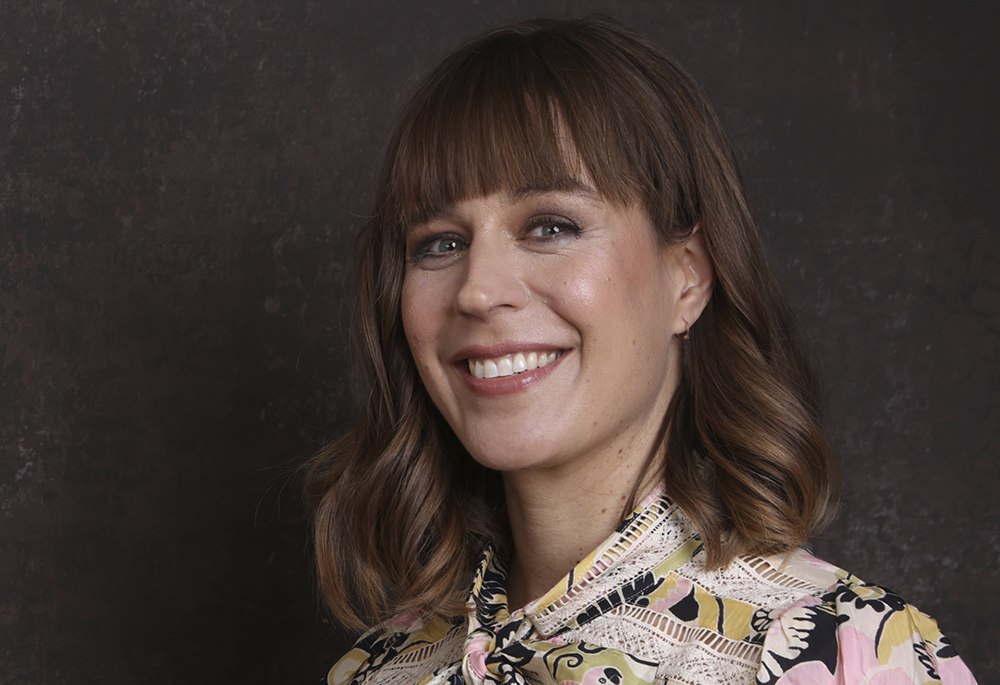
Dorothy Fortenberry, a writer and executive producer for the Apple TV+ television series "Extrapolations" (AP/Invision/Willy Sanjuan)
When it comes to entertainment media, recent years have seen no shortage of films and TV shows displaying various dystopian realities. Catholic screenwriter and producer Dorothy Fortenberry has been involved in bringing more than one of them to life.
Fortenberry was a writer and producer on the first four seasons of Hulu's award-winning drama-thriller "The Handmaid's Tale." Based on Margaret Awood's novel of the same name, the series began in 2017 and the sixth season is currently scheduled to air in 2024.* And more recently, she served as a writer and executive producer on Apple TV's 2023 drama "Extrapolations."
The Internet Movie Database categorizes "Extrapolations" as "mystery," but there's really nothing mysterious about it. As the name suggests, its creators extrapolated trends from the current science on climate change, biodiversity loss and pollution — as well as trends in technology, fashion, economics, development and other factors of modern society — to show what this world will presumably look like if humanity doesn't change the way we live.
Through intimate stories driven by personal relationships, Fortenberry said, " 'Extrapolations' was an attempt to try to capture in a TV show: What are the changes that come from staying the same?"

Adarsh Gourav in "Extrapolations" (Courtesy of Apple TV+ Press)
I spoke with her earlier this year (before the Writers Guild of America strike began on May 2) to find out more about the motivation behind the show and what her Catholic faith brings to this work.
This interview has been edited for length and clarity.
EarthBeat: What draws you to work on shows with dystopian storylines?
Fortenberry: It's just something I sort of ended up in. I'm the kind of person who often asks, "What if something terrible happens?" I tend to be anxious and worried, and I've been lucky to be able to make that my career — in addition to a challenge for me personally.
I'm interested in the choices we make as a society about how we treat each other. Looking at different possible futures or alternative presents is to me an interesting way to try to understand the moment that we're in right now, by comparing it to a moment that's just a little bit different.
What does that "moment that's just a little bit different" look like in "Extrapolations"?
"Extrapolations" tries to show what the future could look like if things continue along current trends. In apocalyptic storytelling, there's usually one big decisive difference or event and you're like, "Wow, that's so different from right now."
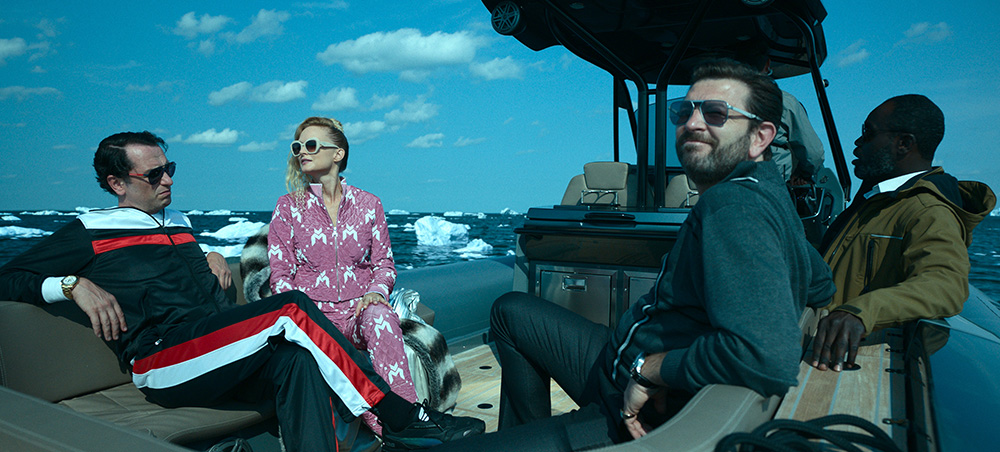
From left, Matthew Rhys, Heather Graham, Alexander Sokovikov and Noel Arthur in "Extrapolations" (Courtesy of Apple TV+ Press)
In "Extrapolations," what we were aiming for was: What if we just keep muddling along on our current path? What are the trends that we are currently doing? What are the behaviors that we currently have? What are the technological innovations that are currently being developed? What are the political trends? We just pushed every line forward at its current rate.
One of the things that's challenging, conceptually, about climate change is that changing our ways of life or patterns or technology is disruptive. But the way climate change works is if we all just keep using our gas cars, then everything else feels different. So one thing feels the same, but then the weather patterns and the food supply change.
What's different about using narrative stories to show this trajectory compared to news reports or scientific studies?
A narrative gives you an emotional perspective. A graph or a chart can convey scope and scale. So you can get a sense of the depth and enormity of the problem. But with a narrative, you can see how it affects somebody emotionally.
What is it like to live in this world? What is it like to be a parent, concerned for a child who has a climate-created health condition? We're not saying every single person on earth will have this experience in a climate-changed future, but we are saying someone you know might, or you might. What does it feel like day-to-day?

Gemma Chan in "Extrapolations" (Courtesy of Apple TV+ Press)
You can go to a place of emotion more easily with a narrative, and then you can get to a place of relationship. All of "Extrapolations"' episodes focus on different kinds of relationships — romantic relationships, parent-child relationships, work colleague relationships, unlikely friends, religious community. Part of what we're trying to show is the challenges to relationships that climate change creates.
"Extrapolations"' characters wrestle with the tension of being present to the needs of personal relationships while also participating in a broader movement. Does Catholicism offer guidance on navigating that tension?
Figuring out how you balance your responsibilities to the people closest to you, while also thinking about everybody else, is a genuine challenge.
With climate change, it is perhaps less of a dichotomy than it may be otherwise, because solutions that are good for the globe as a whole will have positive effects also for you and your family. A transition that produces less fossil fuels will have immediate rebound effects to your small community while also being good for people that you'll never meet.
The good thing about having a religious faith is it's a continual turn back to other people. That also has a scalability. So there's a way that religion has acted in my household with just my immediate family, saying grace or lighting prayer candles. Then there's a larger community of church and the people I see at Mass every weekend. We check up on each other.
Advertisement
Then there's the people who attend that church at other Masses that I don't necessarily know and wouldn't recognize on the street, but we are technically all part of the same community. And then there's the diocese and then the global church.
You can think about yourself as part of something that is both immediate and small, but that also stretches to be very big.
A place that I think really shows that is the prayers of the faithful. There's always a mix of prayers for one really specific person, like a nephew who's having surgery on Tuesday, and then there are also prayers for peace for the entire planet, which is a prayer for several billion people's worth of conflicts to resolve. And you put those prayers right next to each other. There's not a bigger font for one of them, right? You say it with the same tone of voice and the same intention whether it's a prayer for one person or for the entire planet.
To me, that's very grounding, to be able to hold all of those things together in a particular place
In the show, there's a Jewish character preparing for her bat mitzvah. She's probably the character we see grappling most directly with the intersection of faith and climate change. What does that conversation sound like in the context of Catholicism?
I'm glad that we were able to have that character and have that conversation. Climate change is an issue that affects the whole planet and all living things, and the other time that we conceive of the world at that scale is in the context of religion. So it's a natural place to have those conversations.
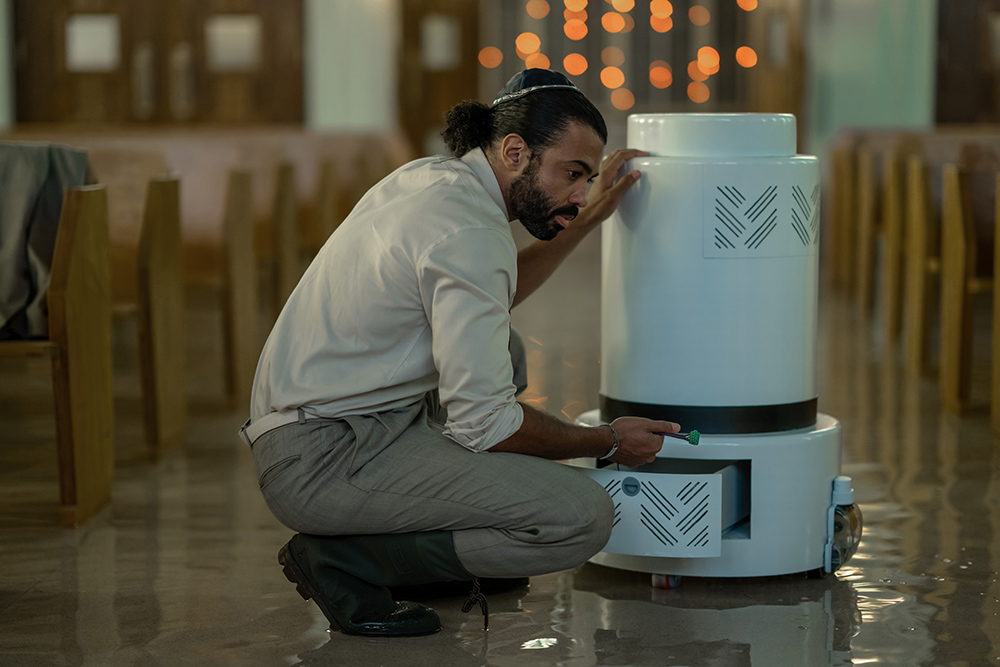
Daveed Diggs in "Extrapolations" (Courtesy of Apple TV+ Press)
Kids who are growing up now are going to have an awareness of what's going on with the climate by the time they're teenagers. They're going to have an awareness that a lot of this was created by previous generations, not them. And yet, they're going to have to deal with the repercussions.
And kids at that age are also thinking about whether and how they want faith to be a part of their adult lives. When I was making a decision to get confirmed, I had a lot of complicated, intense conversations with the priest. It was not something that was easy for me to decide. I wasn't sure about church in general.
I wonder sometimes what God is experiencing when God looks and sees what's happening with climate change. It is something that I pray about — that we'll be able to prevent the worst. It's something I contemplate a lot when I'm in religious spaces because I am trying to think about everybody over space and time.
What role does humanity play in mitigating and adapting to climate change?
In some ways, what the show is positing is that people and people's creativity and people's endless capacity for innovation is part of how we got here. People don't stay put. Whales have been living whale lives and repeating patterns of migration and patterns of child rearing for centuries, and people are constantly changing.
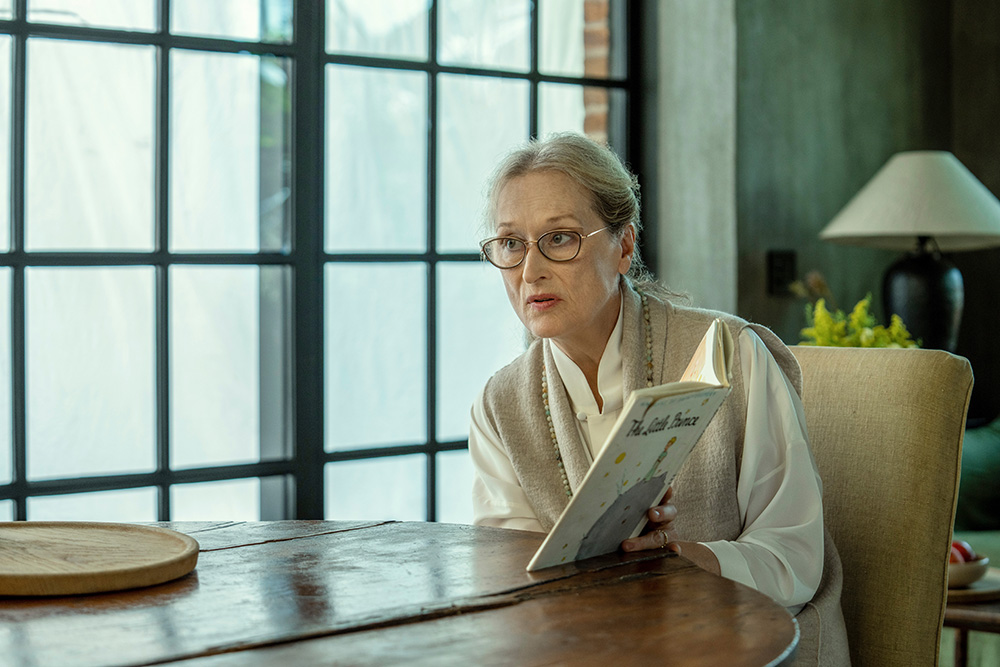
Meryl Streep in "Extrapolations" (Courtesy of Apple TV+ Press)
We're inventing new ways of being and new technologies and new political systems, and that restlessness is a double-edged sword. There's something incredible and beautiful about it — that's how you get cathedrals and that's how you get vaccines.
But also it can be used to invent things that cause a lot of problems. That duality is what we're trying to show about people. The forces that make us dissatisfied with our current state are the forces that push us into things, but they can also be the forces that push us out.
In a scene with the whale, you see that we have things to learn from other species that don't constantly iterate and push and change. And I think it's the same for a several-thousand-year-old religion. There is some part of it that's constantly trying to change and push and grow. But it can be worth it to stop and contemplate what stays the same.
What is it about whales, or a prayer practice that started millennia ago, that keeps going according to patterns? There's something to those old things, too.
Did you make any cinematic choices to emphasize the climate changes taking place?
Yes, one thing is the way we used props and costumes and set design. We were starting in 2037 and we made a conscious choice to have our future not be super future-y.
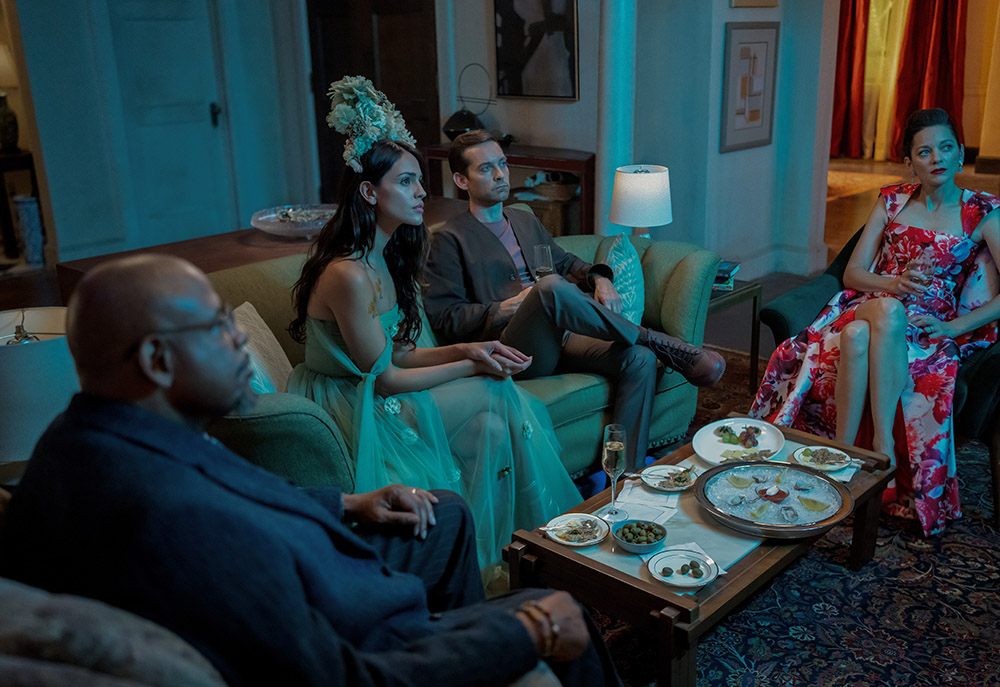
From left, Forest Whitaker, Eiza González, Tobey Maguire and Marion Cotillard in "Extrapolations" (Courtesy of Apple TV+ Press)
Sometimes in portrayals of the future, it seems like everybody in that world got handed their future outfits and you walked into that universe and there's a lot of uniformity. We looked at our current world and thought, some people are wearing pants they bought five years ago, some people are wearing things they got at a thrift shop, some people are wearing the most cutting edge innovative fashion.
Some people have Apple Watches. I wear a Timex watch with a canvas band. I know it's 2023 but I'm a person who doesn't want to have an internet connected watch, so I don't.
We wanted it to feel like a future that wasn't that far from the present day and with a mix of technologies and fashions and all those sorts of things.
But as the series goes on, and we get all the way to 2070, we get farther from 2020. So by the time we're 50 years into the future, the clothes are a little more different. AI is more developed. The communication devices are more developed. The holograms are more developed. But we wanted that to be a gradual change. And there's a way that mimics the gradual changes of climate change.
Part of the thing that's tricky to portray about climate change is it's a slow increase. It's not one big, disruptive, cataclysmic event where you go from everything's normal to everything's a nightmare. It's just every year you're like, "Oh, that's weird. It didn't snow. Oh, that's weird. My allergies are starting earlier."
And that change in temperature and weather systems is something that we mimicked in the scenic design of the show itself.

Sienna Miller in "Extrapolations" (Courtesy of Apple TV+ Press)
We're looking at that development over time — there's eight episodes. The first several episodes have a lot of scenes that are shot outdoors, that have a lot of things that you've seen in the natural world. Even if it's imperiled, even if there are forest fires or extinctions, you're on the beach or in the forest.
Then as the episodes go on, we move away from those shots of nature and the show becomes a lot more indoors. That's part of what we're showing.
There's something magical and wonderful about the world outside. We can currently go outside and look at a tree or a flower or a bird. In the show's storyline, there's a time when we stop being able to do that.
What do you want people to take away from "Extrapolations"? How do you want them to feel when they've finished watching?
There can be a tendency to want to jump to the end of a story. People want to know how it turns out. They want to flip to the last page. What we want people to understand is that we're not on the last page.
We're living in a 1.1-degree-warmed world. A lot of decisions have been made by other people over the last 20, 30, 40, 50 years. But there are still enormous decisions yet to come.
Every day is a possibility to try to make this show obsolete and to try to bend the reality that we're currently living in away from the one that we see on screen in "Extrapolations."
*This paragraph was updated to clarify Fortenberry's role on "The Handmaid's Tale" and other details about the show.





